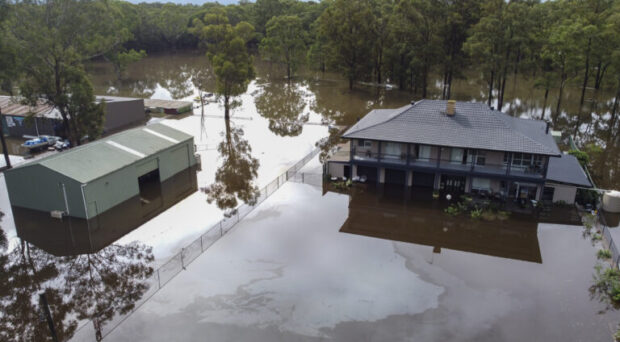Insured losses from Australia’s March floods are expected to hit general (or property/casualty) insurers’ underwriting margins and earnings in 2021, while putting more upward pressure on reinsurance rates, according to a report from AM Best.
The floods, expected to be among the worst to hit the region in the past 60 years, have led to extensive property damage and the evacuation of thousands of people from their homes, said AM Best in its report titled “Australia: March Floods Raise General Insurers’ Natural Catastrophe Burden.”
AM Best noted that Australia’s general insurers have exhibited resilience to catastrophe losses over recent years, supported by typically well-capitalized balance sheets and the significant use of reinsurance to manage net loss exposures.
Nevertheless, AM Best expects these floods to dampen insurers’ earnings for fiscal year 2021, put pressure on insurers’ underwriting margins and add to the industry’s recently elevated loss burden from natural catastrophe events.
Managing Exposures with Reinsurance
The report confirmed that insurers’ net retained exposures are expected to be controlled by the attachment points of their catastrophe reinsurance programs. “The comprehensive use of reinsurance has been a strong contributory factor to the resilient performance of Australia’s general insurers, even in catastrophe-heavy years.”
Because the majority of gross losses from the March floods is likely to be borne by the reinsurance industry, the continued cession of material losses to reinsurers may result in further upward pressure on reinsurance rates, and a tightening of terms and conditions in upcoming renewals for the country’s direct insurers, AM Best said.
Although it is too early to determine the full extent of the damage from the March floods or the cost to Australia’s general insurers, AM Best noted that the Insurance Council of Australia (ICA) has estimated the initial cost of claims to be A$483 million (US$368 million) with more than 29,000 claims filed.
For the purposes of comparison, the 2019 Townsville floods and February 2020 east coast storms and flooding drove insured losses of approximately A$1.3 billion (US$990 million) and A$1.0 billion (US$762 million), respectively.
Above-Average Losses
Australia has seen a period of above-average weather-related losses in recent years, with total insured losses of more than A$8 billion from declared catastrophe events over the past two years, AM Best said, quoting figures from the ICA.
Furthermore, Australian insurers face ongoing uncertainty over potentially significant exposures to business interruption claims arising from the COVID-19 pandemic, which are currently subject to ongoing legal review, adding to the industry’s large loss burden.
With increased frequency of extreme weather events in Australia, such as the 2019 Townsville floods, the 2019/20 bushfires, and January 2020 hailstorms, AM Best expects the insurance industry to increasingly focus on linkages to climate risk.
“The increased frequency of recent weather events also reinforces the need for insurers to implement robust underwriting, capital management and enterprise risk management strategies,” said the report. “These actions may ultimately lead to tightening of terms and pricing increases for policyholders as insurers refine underwriting appetites.”
Source: AM Best
Photograph: In this drone photo, a property is surrounded by flood waters in Londonderry on the outskirts of Sydney, Australia, on Tuesday, March 23, 2021. Hundreds of people have been rescued from floodwaters that have isolated dozens of towns in Australia’s most populous state of New South Wales and forced thousands to evacuate their homes after record rain inundated the country’s east coast. Photo credit: AP Photo/Mark Baker.
*This story ran previously in our sister publication Insurance Journal.





















 Why the Middle Market Matters and How Insurers Can Capture It
Why the Middle Market Matters and How Insurers Can Capture It  How Insurers Can Avoid Post-Merger Technology Failure
How Insurers Can Avoid Post-Merger Technology Failure  Five AI Trends Reshaping Insurance in 2026
Five AI Trends Reshaping Insurance in 2026  Surge of Supercharged Hurricanes Prompt Call for Cat 6 Classification
Surge of Supercharged Hurricanes Prompt Call for Cat 6 Classification 












